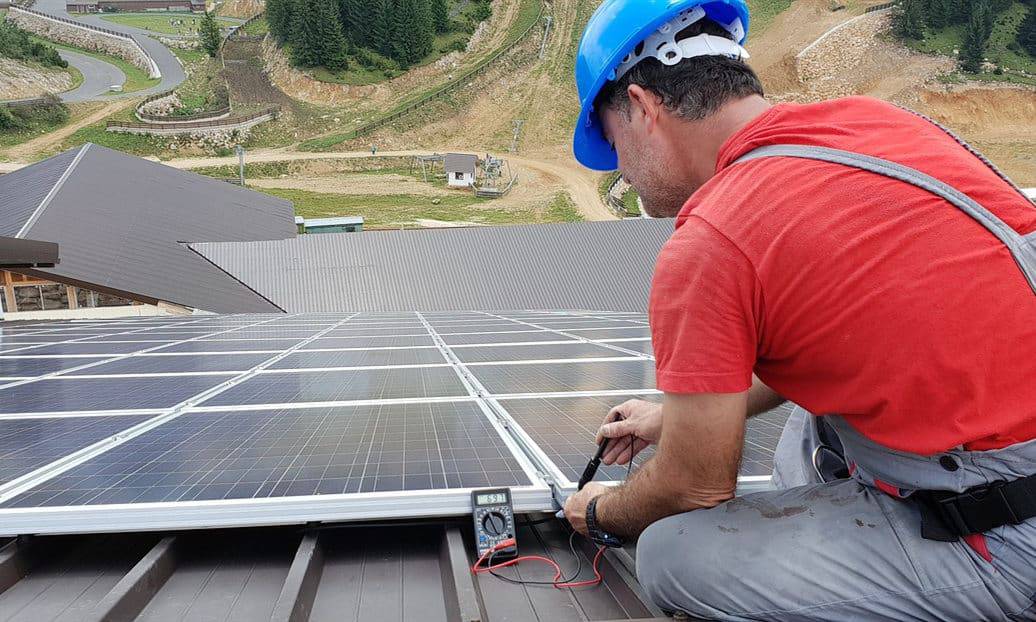
Image Source: Google
In recent years, the popularity of solar energy has been on the rise as more homeowners are looking for sustainable and cost-effective ways to power their homes. Solar panels offer a clean and renewable energy source that can help reduce electricity bills and minimize your carbon footprint.
If you're considering installing solar panels on your home, this ultimate guide will walk you through the key steps to harnessing sustainable energy for your home. If you are looking for a solar panel installation service then, you may contact ABBA ENERGIES.
1. Assess Your Home's Solar Potential
Before you start the solar panel installation process, it's essential to determine if your home is suitable for solar energy. Here are some key factors to consider:
Factors to Consider:
- The amount of sunlight your roof receives throughout the day
- The angle and pitch of your roof
- Any obstructions that may shade your roof, such as trees or tall buildings
- The size of your roof and available space for solar panels
2. Choose the Right Solar Panel System
There are various types of solar panel systems available, so it's essential to select the one that best fits your energy needs and budget. Here are some common types of solar panel systems:
Types of Solar Panel Systems:
- Grid-tied system: These systems are connected to the utility grid and allow you to sell excess energy back to the grid.
- Off-grid system: These systems are independent of the utility grid and require battery storage to store excess energy.
- Hybrid system: These systems combine grid-tied and off-grid systems, providing the benefits of both.
3. Find a Qualified Solar Installer
Installing solar panels is a complex process that requires expertise and experience. It's crucial to find a qualified solar installer who can assess your home's solar potential and design a system that meets your energy needs. Here are some tips for choosing the right solar installer:
Tips for Choosing a Solar Installer:
- Check the installer's credentials and certifications
- Read customer reviews and testimonials
- Get multiple quotes to compare prices and services
- Ask about warranties and maintenance services
4. Obtain Permits and Approvals
Before you can start the solar panel installation process, you'll need to obtain permits and approvals from your local authorities. This is to ensure that your solar panel system meets building codes and regulations. Your solar installer should be able to help you with this process.
Permits and Approvals Required:
- Building permit
- Electrical permit
- HOA approval (if applicable)
5. Install the Solar Panel System
Once you have obtained all the necessary permits and approvals, the solar panel installation process can begin. Here is an overview of the installation process:
Installation Process:
- Mounting the solar panels on your roof or ground
- Connecting the panels to an inverter to convert DC power to AC power
- Connecting the inverter to your electrical panel
- Testing the system to ensure it's functioning properly
6. Connect to the Grid
If you have a grid-tied solar panel system, you'll need to connect it to the utility grid. This is typically done by your solar installer, who will coordinate with your utility company to set up net metering. Net metering allows you to receive credit for any excess energy your system produces.
Benefits of Grid-Tied Systems:
- Ability to sell excess energy back to the grid
- Receive credits on your electricity bill
- Backup power during grid outages
By following this ultimate guide to solar panel installation, you can harness sustainable energy for your home and start reaping the benefits of solar power. From assessing your home's solar potential to monitoring and maintaining your system, these key steps will help you navigate the solar panel installation process with ease.